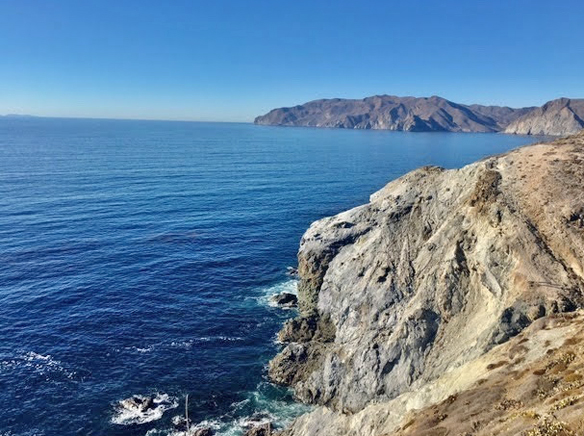
Pandemic rules lead Conservancy to give staff new responsibilities
Courtesy of Catalina Island Conservancy
During the COVID-19 pandemic, there have been times when Los Angeles County restrictions have forced the Conservancy to halt certain activities or programs in order to help stymie the spread of the virus. In an effort to continue providing employment opportunities for affected staff, the Conservancy encouraged cross-pollination between departments with several team members taking on new and different challenges in neighboring areas.
Tom McPartlan, traditionally an Eco Tour naturalist guide, spent a few days assisting Kevin Ryan – someone he had previously only met at the annual Christmas party – with Trails responsibilities.
“I’ll never look at a trail the same way again,” said McPartlan. The experience had him hiking 2 miles straight uphill to help maintain part of the Trans-Catalina Trail. “Every foot of it was tough work.”
With part of the instruction including “think like water,”’ McPartlan and Ryan creating small irrigation channels to keep the trail sustainable and durable to survive rainfalls.
Maria Dominguez, outreach program coordinator with Education, sees her time assisting with Guest Services as a valuable way to create a stronger bridge between departments.
“I had a lot of fun being able to drive Eco Tours again with being able to go off roading and share my knowledge of the science behind what people see,” said Dominguez, who joined the company as an Eco Tour guide before moving to Education. “Our Guest Services staff members are the face of the Conservancy who talk to our visitors, so making sure they have access to any educational resources they need is so important.”
Eco Tour Guide Joy Adelsperger participated in a groundbreaking discovery while assisting the Conservation Department, where her tasks ranged from assisting in the Nursery planting to reviewing trap camera photos and more.
“It was the last hour of my first day looking at photos and I came across a picture that made me get out the pamphlet of all of the animals on the Island” Adelsperger said.
“I looked back at the picture, then to the pamphlet, then back to the picture before sliding Emily (Hamblen) a note in the middle of her meeting that said ‘Could this be a shrew?’” Adelsperger said.
After reviewing the image, the wildlife biologist shared the exciting news with her colleagues that Joy had viewed the first evidence of a live endemic shrew on Catalina in more than 15 years.
“I felt important that day,” said Adelsperger. “It was very cool to be able to be a part of that.”
The experience gave Conservancy staff a new appreciation of their organization.
“We got to live the organizational chart, not just look at it,” McPartlan said.










